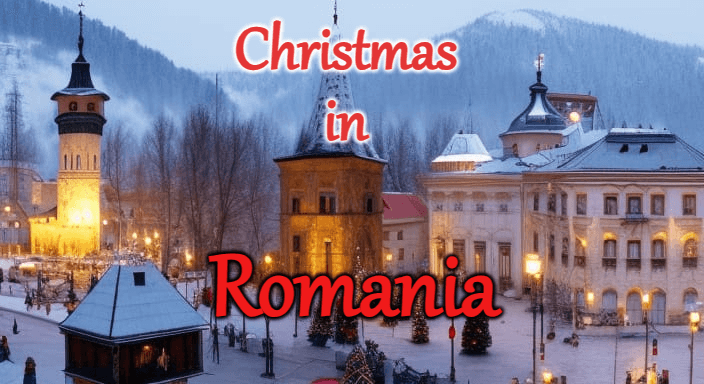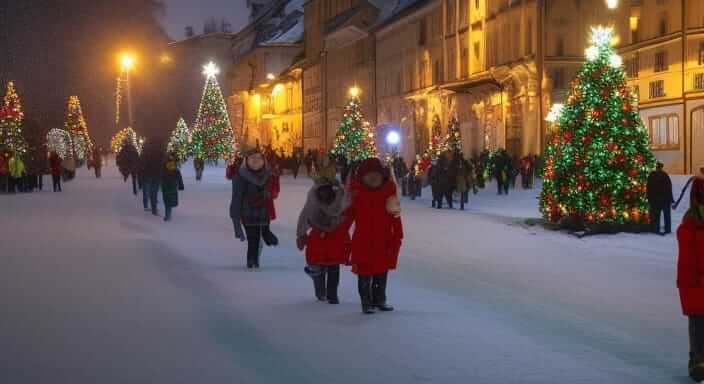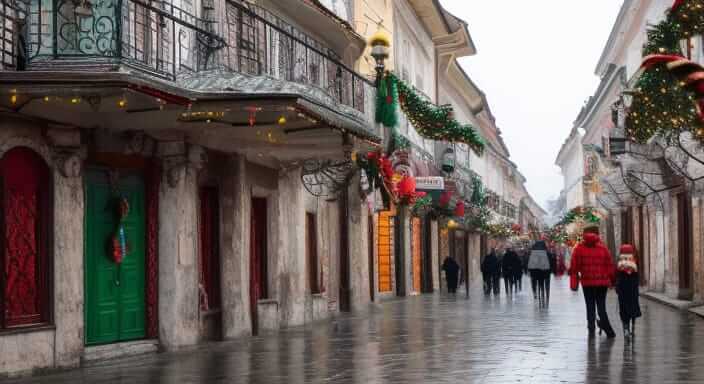Discover the vibrant traditions and joyful celebrations of Christmas in Romania. From caroling and festive meals to midnight Mass and gift exchanges, explore the rich cultural heritage and religious customs that make Romanian Christmas truly special.

Christmas in Romania is a widely celebrated holiday with deep-rooted traditions. It is known as “Crăciun” in Romanian. Here is a short description of Christmas in Romania:
- Date: Christmas in Romania is celebrated on December 25th, following the Gregorian calendar, which is the same as in many other countries.
- Religious Significance: Christmas commemorates the birth of Jesus Christ and is a significant holiday for the majority of Romanians, who are predominantly Eastern Orthodox Christians.
- Preparations: In the weeks leading up to Christmas, Romanians engage in various preparations, including cleaning their homes, decorating Christmas trees, and preparing traditional foods.
- Christmas Eve: The main celebration takes place on Christmas Eve, known as “Ajunul Crăciunului.” Families gather together for a festive meal, which typically consists of traditional dishes like sarmale (stuffed cabbage rolls), cozonac (sweet bread with nuts or Turkish delight), and other regional specialties.
- Caroling: Caroling is a cherished tradition in Romania. Groups of children or adults, dressed in traditional costumes, go from house to house singing carols, spreading joy, and receiving small gifts or treats in return.
- Midnight Mass: Attending the Midnight Mass at a local church is an important part of the Christmas celebration for many Romanians. The service marks the birth of Jesus Christ and is a time for prayer and reflection.
- Christmas Day: On Christmas morning, families exchange gifts and spend time together. It is a day of relaxation, visiting relatives, and enjoying the festive atmosphere.
- Post-Christmas Traditions: The Christmas celebration continues after December 25th. Romanians celebrate the following days as well, such as “Ștefan cel Mare” (St. Stephen’s Day) on December 27th and “Crăciunul pe stil vechi” (Old Style Christmas) on January 7th, according to the Julian calendar.
These are some key aspects of how Christmas is celebrated in Romania. The holiday is characterized by a mix of religious customs, family gatherings, traditional cuisine, and joyful festivities.

How is Christmas Celebrated in Romania?
Christmas in Romania is a cherished holiday that combines religious customs with rich cultural traditions. Here’s a closer look at how Christmas is celebrated in Romania:
- Preparations: Romanians begin their Christmas preparations well in advance. They thoroughly clean their homes and decorate them with ornaments, lights, and a Christmas tree, often adorned with homemade crafts and traditional ornaments.
- Advent: The period of Advent, the four weeks leading up to Christmas, is observed by many Romanians. It is a time of fasting, prayer, and reflection, during which people focus on spiritual preparations for the birth of Jesus.
- Christmas Eve: The most significant celebration takes place on Christmas Eve, known as “Ajunul Crăciunului.” Families gather together for a festive meal that typically includes traditional dishes such as sarmale (stuffed cabbage rolls), cozonac (a sweet bread with nuts or Turkish delight), and other regional specialties. The table may also have an extra place set for deceased family members, symbolically inviting their spirits to join the celebration.
- Carols and Singing: Caroling holds a special place in Romanian Christmas traditions. Groups of children and adults, dressed in traditional costumes, go from house to house singing carols, spreading joy, and bringing blessings to each home. They often play musical instruments such as flutes, drums, and violins. In return, they receive small gifts, sweets, fruits, or money.
- Midnight Mass: Attending the Midnight Mass, called “Masa de la miezul nopții” or “Sfânta Liturghie de Crăciun,” is an important part of the Christmas celebration for many Romanians. It is a solemn and joyous church service held in beautifully decorated Orthodox churches. The service marks the birth of Jesus Christ and includes prayers, hymns, and the reading of biblical passages.
- Gift Exchange: On Christmas morning, families exchange gifts. It is common for children to receive presents from “Moș Crăciun” (Santa Claus) or “Moș Nicolae” (St. Nicholas). The gifts are often placed under the Christmas tree or in stockings hung by the fireplace.
- Family Gatherings: Christmas is a time for family reunions and spending quality time together. Relatives and loved ones come together to celebrate, share meals, exchange stories, and create lasting memories.
- Post-Christmas Traditions: The Christmas celebration extends beyond December 25th in Romania. The days following Christmas, such as “Ștefan cel Mare” (St. Stephen’s Day) on December 27th and “Crăciunul pe stil vechi” (Old Style Christmas) on January 7th (according to the Julian calendar), are also celebrated with gatherings and festive meals.
Throughout the Christmas season, there is a warm and joyful atmosphere in Romanian homes, with an emphasis on faith, family, and traditions.

In Romanian, Merry Christmas?
In Romanian, “Merry Christmas” is “Crăciun fericit!” or “Sărbători fericite!”